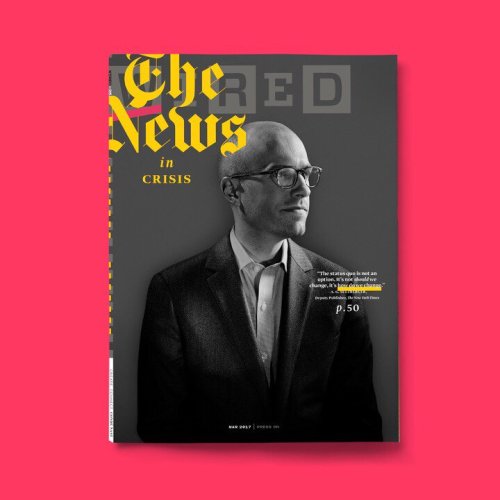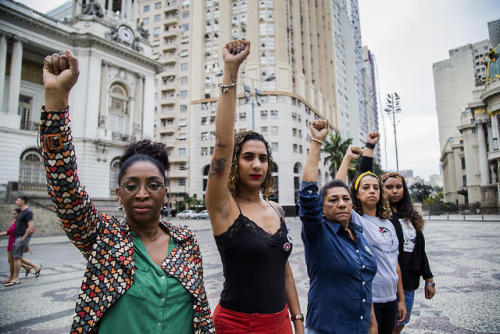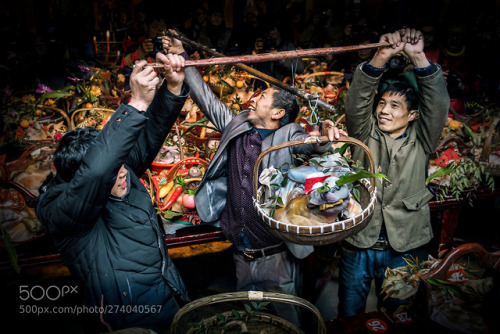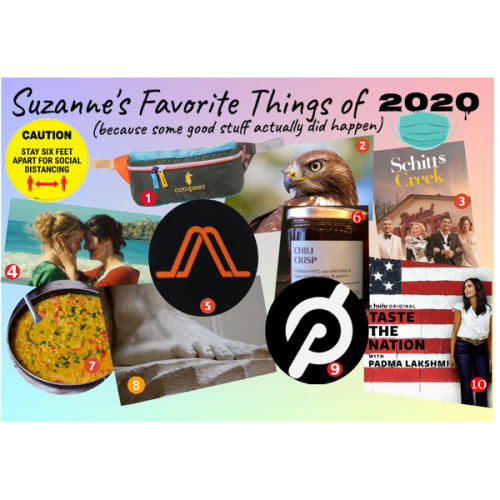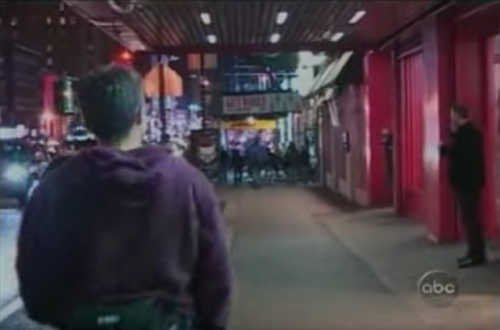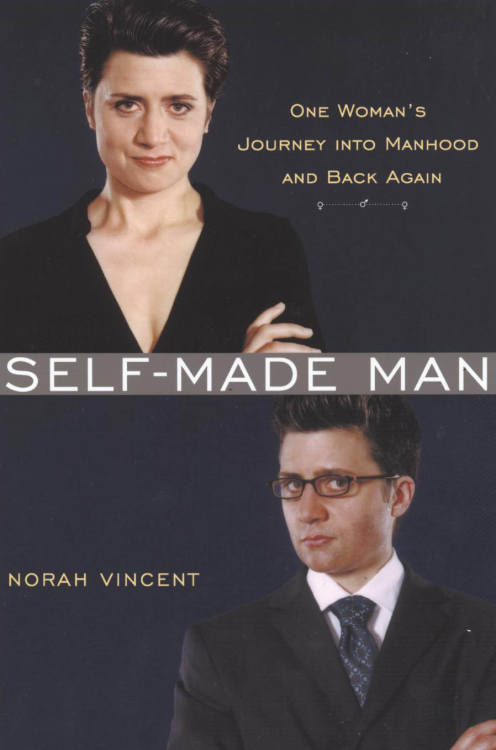#journalism
As the past 30 years of press history shows, everything changes. Great journalism helps us understand how and why things change, and we need that now more than ever.
Read More: Fake news is everywhere. Here’s how the internet can stop it
Post link
The future of journalism is at stake. Take a look inside The New York Times’ biggest-ever strategy shift.
Read More: How the New York Times Is Clawing Its Way Into the Future
Post link
Our Social Media, Development and Outreach, Education and Democracy Now en Español departments are searching for our next class of interns, from January-June 2019.
Democracy Now! Internships are paid, 20 hour per week, temporary work placements to help students, people early in their careers and career changers to gain entry-level skills and experience in the fields of outreach, social media, education, fundraising, translation and archiving in a non-profit setting. All internships take place at our Manhattan studio where we produce our daily TV and radio news hour.
Post link
Submit now to our media awards where we’ll honor and recognize excellence in human rights reporting and the vital role of a free press. The closing date for entries is February 15. #AIUSAMediaAwards http://fal.cn/rlOI
Post link
“Untitled by vcg-GUWEI”
☛http://bit.ly/1dG7rXS
New Editors’ Choice photo on 500px: Journalism
Post link
“青春万岁 by 07aa04c1e4524961cd369ac6b49c41007”
☛http://bit.ly/1dG7rXS
New Editors’ Choice photo on 500px: Journalism
Post link
“The Harvest by kgribov”
☛http://bit.ly/1dG7rXS
New Editors’ Choice photo on 500px: Journalism
Post link
“Child of Saint Louis by germainconstantin”
☛http://bit.ly/1dG7rXS
New Editors’ Choice photo on 500px: Journalism
Post link
by Emily Joveski

Sandra Diaz of the Canadian Women’s Foundation speaks on a panel at Ryerson, Mar. 4. (Photo courtesy Emily Joveski)
Stephanie Guthrie is well aware that the pen is oft mightier than the sword.
“I’m going to tell you something you may not know,” the bespectacled feminist advocate said to a room of mostly Ryerson University journalism students in Toronto, Canada. “Words are political. Your job as journalists is a political one.”
Guthrie was one of five speakers at a panel called Media Coverage of Sexual Violence on Campus, held at Ryerson last week. The panel discussed ways journalists can responsibly report on sexual violence. Much of the discussion was centred on driving home the fact that rape culture exists everywhere, including Canadian university campuses.
Last year, both Saint Mary’s University in Nova Scotia and the University of British Columbia(UBC) made headlines for having freshmen sing pro-rape chants during orientation activities. Meanwhile, UBC’s Sauder School of Business performed a sexualized and racist “Pocahontas” chant at their frosh week. The chant went something like this: “Pocah, Pocah, Pocah, Pocahontas – white man took our land, Pocahontas, ass, ass, ass.”
This isn’t just happening during frosh week. You may have heard about the University of Ottawa student union leader, Anne-Marie Roy, who was recently the subject of a sexually violent Facebook conversation between male members of the student leadership. They said, “Someone needs to punish her with their shaft.” You may not have heard that the same week Anne-Marie Roy went public about the graphic Facebook conversation, the U of O’s men’s hockey team was suspended amid a sexual assault investigation involving several of the players. An assistant coach said the incident has been blown out of proportion.
In 2012, there was a string of sexual assaults across several Toronto neighborhoods, including an incident around Ryerson. In the span of two weeks, six incidents of sexual assault were reported on Ryerson campus. Toronto Police and Ryerson’s emergency and security services encouraged women to be vigilant about their surroundings. This attitude, that places the responsibility on women to avoid sexual assault, is what prompted Stephanie Guthrie to organize block parties where women and men could come together to reclaim our neighbourhoods as safe spaces. Guthrie says, however, that the same night she hosted a party in Ryerson’s Pitman Quad, a woman was assaulted at another party on campus.
Cindy Baskin, a professor at Ryerson’s School of Social Work points to the over-sexualized Pocahontas—or “Pocahottie”—Halloween costume as further evidence of persistent sexist and racist stereotypes on campus. Last year, “Eskimo cutie” and “sexy Indian” costumes were for sale at the campus bookstore of McMaster University. Aboriginal women in particular are vastly overrepresented in terms of racialized and sexualized violence, and shamefully underrepresented in the media. “Aboriginal women are seen as disposable, often stereotyped in the media as prostitutes, welfare recipients, and sluts,” says Baskin, who is of Mi’kmaq and Irish descent. She calls for Ryerson’s Journalism School to take the lead in developing a course that focuses on reporting Aboriginal issues.
The media is a crucial player in how sexual violence is perceived. News stories may over-report what the victim was wearing or how they were behaving, or how the perpetrator was such an upstanding member of the community. This perpetuates victim blaming. Sandra Diaz of the Canadian Women’s Foundation cites a recent poll that says 19 per cent of Canadians—both men and women—believe that a woman encourages sexual assault when she is drunk. Eleven per cent of Canadians believe that a woman who wears a short skirt is provoking assault. “Rape predates miniskirts,” says Diaz. “Everyday, women are raped at home, sober, wearing a baggy tracksuit.”
Yet even when reporters take pains to accurately and respectfully report on sexual assault cases, on the next page we have journalists like Barbara Kay and Margaret Wente insisting that rape culture doesn’t exist, that feminists are delusional and that college girls just need to stop drinking so much. Excuse me, Ms. Wente, but this is rape culture. And that type of word vomit needs to end.
When sexual assault happens on campus, it’s not because of student drinking or girls wearing short skirts. It’s because we live in a culture that encourages male sexual aggression and the use of physical and emotional violence against women. Rape culture says that sexual violence is a fact of life and that the best women can do is try not to encourage men to rape them. The fact is that men are almost always the perpetrators of sexual violence, and men need to be part of the solution. “At the core of rape culture on campus is how we raise men and boys,” says Ron Couchman, a spokesman for the White Ribbon Campaign, which is aimed at engaging men and boys in conversations about stopping violence against women. “It’s important to include and engage men,” says Couchman, “but also for men not to dominate the conversation, and to provide space for women’s voices.”
It’s important for everyone to be engaging their friends, family, classmates and coworkers in conversations about rape culture. But it’s up to journalists to provide space for the stories of women—especially stories that often go unheard, like those of trans people and First Nations women.
When journalists report responsibly on sexual violence, we’ll talk less about preventing rape, and more about stopping it.
For more information, visit the Toronto-based Femifesto for a toolkit for journalists writing about sexual assault. And if you’re still unsure about what rape culture is, check out this great post by feminist blogger Melissa McEwan titled “Rape Culture 101.”
This post was originally published by RyersonFolio.
Suzanne’s Favorite Things of 2020
1. Cotopaxi Bataan Del Dia Fanny Pack. My first clue that 2020 was going to be weird should have been when I coveted my wife’s fanny pack.Was I really giving a second look to the fashion staple of the 80s that I was certain I would never sport around my waist? I was. But let’s face it, when you’re going for a long walk (and there were many of those in 2020) and your pockets can only hold so much, a fanny pack is the perfect accessory for your phone, a bottle of water, and keys. I like to say that my wife, who neither she nor I would label as fashion-forward or clothes-minded, makes roughly three to five style decisions each year. This year she hit the jackpot by looking back at what I thought was a relic of the past, an artifact only to be found in photos of tourists waiting in line at Disney, and gave life to my new favorite old accessory. Thank you, Erin.
2. Red-tailed Hawks. The world was sad this year. At times, March, April and May especially, it seemed like we all had our heads down. I was no exception. What the pandemic took from my calendar it paid back in extra servings of anxiety, worry, and uncertainty. My head was down, too. But on days when I went outside and into nature, I tried to remember to look up, to search the trees - bare and brown in the beginning, but robust and bursting with delicate green leaves by June - and I’d always see a red-tailed hawk patiently perched, effortlessly camouflaged, poised for flight without warning. Sometimes I’d even spot them soaring the skies above the treetops, gliding without so much as a feather flap of their kite-like wings. The hawks, like other animals have shown me at low moments in life, became a mainstay of my time outside in 2020. I watched out for them daily and they were always there, giving me a reason to look up.
3. Schitt’s Creek. In the dark, uncertain first weeks of the coronavirus pandemic, and through the periods of lockdown and quarantine that followed, Schitt’s Creek was my entertainment oasis, my welcomed interruption from the daily infection numbers that news anchors reported from behind their makeshift home offices. Despite being a lifelong Catherine O’Hara fan and walking past oversized show posters plastered to subway station walls for two years, it took decamping to Connecticut for me to invest in watching the lives of Johnny, Moira, David, and Alexis unfold in their adopted and ambiguously-located town of Schitt’s Creek. I started with a binge, speeding through the first two seasons, but by season three I paced myself for fear of landing on the final season too soon. I cried during “Life Is a Cabaret”, and then re-watched some especially hilarious episodes until I reached the inevitable end of the streaming rainbow. In a time of such immense suffering and crippling uncertainty, this show was more than just 20-something minutes of comedy. It was a reason to laugh when there seemingly was none.
Also Check Out: Some of my very favorite Schitt’s Creek episodes include “The Hospies”, “Allez-Vous”, and “Wine and Roses”.
4. Portrait of a Lady on Fire. It’s no surprise that a film about a gay love affair set in a time when there were no words for a same sex romance made it onto this list: it’s a plot line that, for me, never dulls with each unique reincarnation. And while I believe the world needs to see, hear, and read more LGBTQ love stories, “Portrait of a Lady on Fire” surpassed this simple aspiration and rightfully earned its place on this list for an equally simple reason: it’s a quietly beautiful and visually stunning film with dialogue that strikes just the right balance between superfluous and stark. The main characters (Marianne and Heloise) are two 18th century women way ahead of their time by standards of self-actualization and emotional awareness, which was enough to send my “oh this is not going to end well” meter into overdrive. From their first meeting on the shores of a windswept island off the Brittany coast, it’s obvious that whatever spark exists between them will be bright, but brief, exquisite, but tragic, as I suspect many gay romances were in the late 1700s. “Portrait of a Lady On Fire” unfolds slowly at first, using side glances and nuances to reveal Marianne and Heloise to each other in a way that feels secretive and special. We all know how this story will end, but we can’t look away and we hope that love will win hundreds of years before its time.
Also worth checking out: “Becoming”, the Michelle Obama documentary, provided a wonderful portrait of our most dynamic, modern, and interesting First Lady while giving me hope for a return to decency in the White House in 2021.
5. Audm. I like to think that despite the protests, the deepening divides in the U.S., the unprecedented devastation, and the tumult that defined 2020, it was a year of listening. Public health officials, demonstrators, world leaders, and politicians all spoke louder than ever in 2020, and we listened even if we didn’t like what they said. As the COVID-19 fatalities rose and health inequity became increasingly more apparent in our communities, we heard ourselves echoed in the country’s collective conversations about race, health, and injustice. Through the noise of the year, I did a lot of listening via Audm, an app that narrates longform journalism from dozens of sources, including Vanity Fair,The New Republic,The Atlantic, Rolling Stone and many more. Having access to myriad articles and news outlets I would never have the time to sit down and enjoy was one of my first discoveries of the pandemic, and it’s one that I’ll continue to rely on long after these dark days are behind us. Whether it was on long walks, car rides to escape the monotony of home, or just a lazy afternoon outside, Audm made it possible to listen more in a year that was filled with so much noise.
Honorable mention: “The Daily”, the podcast from the New York Times continues to be at the top of my essential must-listen-list. Each episode renews my love for journalism and storytelling.
6. Chili Crisp. Is it called chili crisp or chili crunch? I’ll leave the debate to informed foodies to settle. Either way, this delicious chili-infused oil was a late addition to the 2020 Favorite Things list, but no less deserving of its spot here. Made with crunchy bits of peppercorns, garlic, shallots, and other assorted ingredients depending on your recipe of choice, this condiment is perfect on eggs, toast, sandwiches, vegetables and just about anything else that needs a boost of flavor. So is it crisp or is it crunch? It doesn’t matter. Just eat it.
7. Yellow Lentil Dal. I love spicy food, I crave spicy food, and every few weeks I need to re-expose my taste buds to dishes that either take me to another part of the world or introduce me to a new culinary world while gently knocking my socks off. I knew this about myself before the pandemic, but in the weeks of quarantine, and avoiding take-out, my need for spice intensified. Moving from New York City to Connecticut - not exactly a culinary mecca overflowing with a diversity of ethnic food options – presented another challenge. The solution was found in “Flavorwalla”, a cookbook by Floyd Cardoz, the late Indian-American chef we tragically lost this year. His 344-page book contains recipes for every palate and preference, and a variety of occasions, from cooking for two to special dinner parties. And yes, there are pictures, too. My favorite Flavorwalla dish that I made twice within a two-week span is a Cardoz’s yellow lentil dal. With just 12 simple ingredients, it’s a super quick meal that cooks in one pot and satisfies my need for spice, if only for a few days.
Honorable mention: The cookbook “Alpine Cooking” by Meredith Erickson is also worth checking out for its incredible photography and descriptions of a the cozy mountain towns of Italy, Austria, Switzerland, and France.
8. David’s Ankles. With the help of the Audm app (#5 on this list), I consumed a lot of great journalism this year.The unwieldy and dark life of Doris Duke; the state of genetic testing in Denmark; the conspiracy theory behind Britney Spears’ Instagram posts; a love story told 72 years later; the staying power of Cher and so many morearticles lifted me up, brought me to tears, and left me happy, confused, angry or inspired. But one article took me back in time to 2001 when, as a very young traveler, I stood in front of Michelangelo’s 17-foot statue of Davidand didn’t look away for what could have been hours.Written by Sam Anderson and published by the New York Times, the article goes deep into the long, flawed history of the marble slab that eventually became “the Giant” as David is known in Florence, its three-year journey down the side of an Italian mountain before Michelangelo’s birth, decades of neglect that followed, years surrounding the statue’s plagued creation, and the nearly four troubled centuries that David spent watching Italy evolve around his massive feet while enduring the brutality of mother nature (wind, sun, rain, and pigeon feces) and human nature (desecration, abuse, and dismemberment). Supporting the art history lesson, Anderson masterfully weaves in the personal narrative of his obsession with David, his compulsion to mimic the sculpture’s perfection in the decades following their first encounter and the hairline cracks that are slowly coursing their way beneath the surface of David’s fragile ankles today – a reminder that nothing, even the most impeccable specimen of human creation – lasts forever.
In a year when boarding an airplane was considered reckless and dangerous,I ping-ponged between Connecticut and New York by car and put my long distance travel dreams aside, save for the brief period in August when an author and his article transported me back in time to my 21-year old self meeting Davidfor the first time.
9. Peloton. In 2014 I added spinning to my annual round-up list, citing that it encompassed a few of my favorite things: sweating profusely, loud music, spandex outfits, and getting yelled at by a live instructor. Six years later, my love for spinning has only grown stronger, as I’ve continued to get it all out on the bike in my tight pants with house music and clever remixes making my legs move faster faster faster with each class. This year, like so many of my fellow riders, I ditched the live studio experience, clipped into the Peloton community from the narrow seat of my own bike, and dug deep to keep the positive vibes pumping. I don’t miss the live classes in the company of others (the pandemic has, perhaps, made me more of an introvert), and I know the Peloton instructors to turn to when I want to be pushed just a little harder.
10. Taste the Nation. Padma Lakshmi: ever heard of her? I, of course, knew her as the host of “Top Chef”, but without ever watching more than 30 seconds of the reality show, she was just another famous person to me. That changed in June when I watched her Hulu show “Taste the Nation.” As an immigrant herself, Padma (we’re on a first name basis now) explores American cuisine by diving deep into the various immigrant groups who shaped what we know today as American food. Part travelogue, but largely a candid and forthright scouring of the untold history of food in this country, the show (and Padma) uncover the origins of burritos, hot dogs, chop suey, pad thai, poke, and more. In a year when I was not traveling anywhere outside of the tri-state area, but dying to see something new, “Taste the Nation” took me across the country, introduced me to new people, provided culinary history lessons, and gave me a new friend in Padma.
Post link

REGARDING BLACK MEN REFUSING TO DATE BLACK WOMEN…
The issue here is that all of these groups of men and their value of their women cannot be analyzed outside of the context of colonialism. They cannot be analyzed outside of the fact that the black woman, and man, are the most despised and degraded group of people on earth. Society doesn’t value the black woman and that resentment is taught to all of us, including black women, from birth.
Asian women are uplifted in society, “Hispanic” women (by which I assume they mean Latina/ indigenous women cuz if they’re talking about women actually from Spain then they’re talking about white women) are uplifted, white women are the archetype, the standard of beauty, of worth, of womanhood period while black women are the opposite of the white woman- the opposite of her beauty, her grace, her worth, her womanhood and are treated accordingly.
How many of those same white, asian and Hispanic women would happily marry (not just sleep with) a black man? Very, very few. I’m also confident that black women unwilling to be with black men vastly outnumbers other groups of women unwilling to be with men of their own nationality.
This certainly isn’t the fault of the black woman but neither is it the fault of the black man.
This is the result of a societal standard that the entire world’s population subscribes to by default until they make a conscious effort to overcome it (decolonizing the mind). Black people, historically and presently, are the most disempowered, reviled, disregarded, degraded and brutalized people on earth and because of that, we learn to resent each other as well. We develop an inability to even see the value in the life of a black person, much less see one as a viable romantic partner. This is the root of any black person refusing to deal with another black person romantically.
Once this system that makes white people the standard of humanity and everything that stems from it (beauty, intelligence, dignity, worth) is defeated, that’s when black people will be able to enjoy a dignity, respect and societal praise/ upliftment that we haven’t experienced for hundreds of years.
That’s when the worth of our people will be the standard n we’ll most certainly be dating each other lol.
——————
For more black magic Follow IG: TheMightyDexter
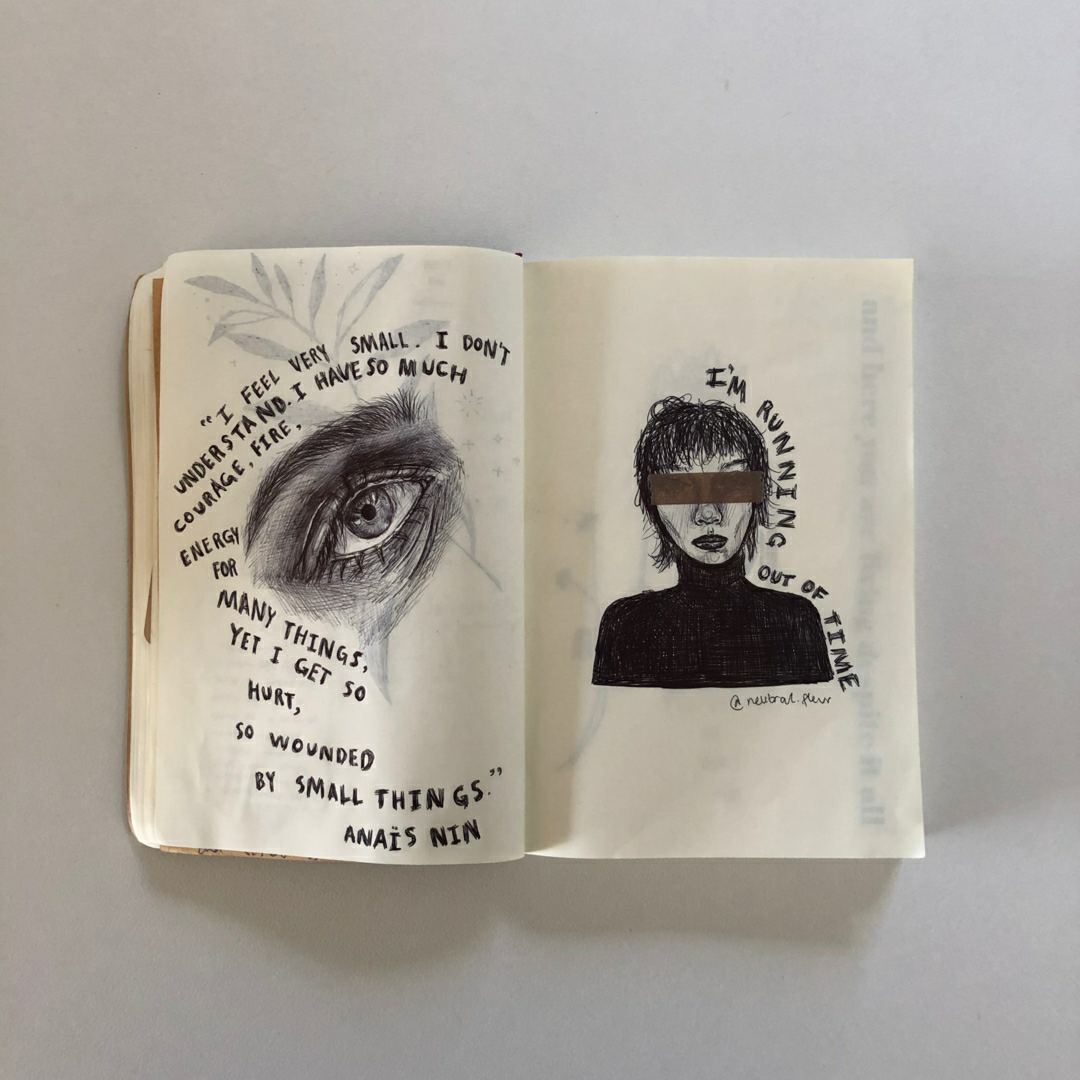
so proud of this spread! follow me on instagram: proudpuddle
Last week, a NYTimes article by Kate Taylor entitled “Sex on Campus: She Can Play that Game Too” made its rounds throughout the Internet, and especially the University of Pennsylvania community, the backdrop setting for Taylor’s article.
Yesterday, Penn alumna Raja Jalabi published a powerful response in the UK Guardian called “College Culture? An Alcohol-fueled Frenzy of Sexual Harassment.”
I think both of these articles are necessary and important: necessary for dialogue, necessary for gaining perspective, and important in ushering change to create safer spaces for everyone both at Penn and nationwide.
Having read Jalabi’s piece, grateful for her publicly speaking up and out, I’ve decided to share a statement I wrote last week in response to Taylor’s initial article:
I found Kate Taylor’s article to be everything from triggering, disturbing, lacking sexual diversity, and deeply heterosexist, to necessary and important. I kept thinking about my own experience as an undergraduate at Penn, a four-year period I cherish, during which I built incredible and lasting friendships, learned from awe-inspiring mentors and educators, and solidified my personal and professional passions and dreams.
Yet, my time at Penn was also coated by both traumatizing and empowering sexual journeys. After my first month at Penn, I was date raped on my dorm room floor by a male stranger while I was drunk (a non-Penn student in town visiting a friend on campus); days before graduation, after a year and a half of chosen celibacy to heal from the aforementioned and other traumas, I had a positive and consensual one-night stand with a male Penn student, transitioning me into a sexual narrative that has since remained positive, consensual, and empowering.
Amongst the host of reasons I chose to attend Penn was their Classical Studies department and The Kelly Writer’s House. Others went for Wharton Business School, Penn’s Nursing School, to play basketball, to join an acclaimed performing arts group, or myriad other academic and extracurricular activities, taught and overseen by top notch educators offering world-renowned facilities.
Penn has spent billions of dollars on academic, research, financial aid, scholarship, scholarly, and creative endeavors. I hope that the Penn community - current students, faculty, staff, administrators, alumnae, and alumni - take this article as an opportunity to approach sexual experiences on campus, sexual identity on campus, sexual orientation on campus, heterosexism on campus, sexism on campus, sexual violence on campus, drinking on campus, drugs on campus, and student life on campus with the same care, funding, and seriousness that are given to matters of the mind.
Penn students, faculty, staff, alumnae, and alumni seek to be leaders in world thought, innovation, and change.
So let us.
Let this be an opportunity to embrace dialogue. To wear Kate Taylor’s article vulnerably on our sleeves. To pioneer a revolution awakening from the silence on these matters and the endless oppressions that jeopardize students’ safety and well-being. To ensure the next time someone writes a feature article in the New York Times about female student sexuality on Penn’s campus it lets go of anonymity and includes LGBTQ, male, and other gendered voices, and welcomes perspective from other campus spaces left entirely overlooked.
May we cease to shame others.
May we cease to harbor shame upon and within ourselves.
May we cease to feel threatened by sharing our stories.
May we ignite a dialogue through and with compassion and empathy.
May our bodies receive the same dignity we demand of and for our minds.
when i was eleven, my older brother passed away. he was fourteen, he loved blink 182 and the offspring, he played guitar and was even a part of a band (MFIC; motherfuckers in charge). he was impatient but kind, and he was the best brother i could have asked for. it has been nine years since he passed and i have forgotten what his voice sounded like.
i have forgotten what it was like to have a constant companion, someone who was always there to talk to. when he was with me, i felt protected. nobody could hurt me with my big brother there. he never let anyone rag on me, even if he was actively doing so (which was often.)
i loved my brother dearly, even though he most likely regarded me as the annoying kid sister most of the time. I liked to be wherever he was, doing whatever he was doing. i admired him more than i had or ever will admire somebody else, with no regard to how irritated he would get at my constant presence. nobody likes to hang out with their little sister 24/7.
looking back i am glad i pestered him so much to play with me, as now i have more memories to look back on. like playing on the stairs that led up to his room, slowly moving up each step until reaching the top, where i would be so loud and obnoxious until he came out and let me play the playstation with him.
or when we would play swords in the backyard, when we shot empty soda cans with bb guns, when he dared me to eat a jalapeno out of our mom’s garden (which i did, in one big bite.) and then had to run inside to get a glass of milk while i cried and blubbered in the middle of the yard. when we were playing storm troopers in the middle of winter, and my tongue got stuck to a metal pole.
while i may not remember his voice, his smell, or the small details of him as a person, i do have the memories of the time spent together. nine years have passed and my brother has become more of an idea than a person. i think about him everyday, if not when i wake up then before i fall asleep.
i think about what my life would be like with my big brother still by my side. would i carry the same ideas, would i have the same passions? who would i be had he not passed away? sometimes i wish i was her, oblivious to loss and able to live a complete childhood.
but i figure every life has a purpose, so does every death. in the short time i had my brother, i had the best childhood any kid could ask for. i had a partner in crime, who i thought would be there forever.
after nine years you would think you would find a way to fill that hole that is left in your hear after losing a loved one. you find ways to distract from it, to busy yourself. but you never find exactly what you need to feel complete again, simply because you are unable to.
i love you big brother, you stay in my heart always.

Before we name our roles, let’s be frank: everyone working with YVUK is a volunteer. Everyone. We’re a tiny outfit with one inglorious aim: to help young voters understand the murky world of British politics.
At the moment, we operate from two laptops in the home counties in the hours we can spare when we’re not at our day jobs or handling the responsibilities of life.
So these roles won’t offer any compensation beyond the satisfaction of building something hopefully momentous. In the last 3 weeks of the election, we reached over 10,000 people on Twitter and currently average 60-100 interactions per post on Tumblr. This all in our first month of operation.
If that’s enough for you, welcome aboard!
We’re looking for:
- Content writers
- Social media team
- YouTube team
- Graphic designers
- Awareness volunteers (hanging posters, dropping leaflets etc)
If you’re even the slightest bit interested in any of the roles mentioned here, or if you think you can contribute in some other way, please email [email protected] for more details. You can also leave a message in our Ask Box here.
WHO WE ARE
In the wake of GE2017, we’ve picked up lots of new followers so we thought we’d give a quick run-down of what YVUK is all about.
We are a non-profit organisation working towards an informed electorate through education.
We live in an age where information on any topic is available with a few keystrokes, but where it’s increasingly difficult to know how much of that information is accurate. You only have to look at the front page of The Sun to see how much our news is being distorted daily.
Young Voters UK aims to present the political news in an unbiased way so that we as a generation understand our vote.
If this sounds like something you’d like to get involved with, we’d love to have you on our team! We are looking for volunteer writers, campaigners, graphic designers and researchers: for more information, email [email protected]
Post link
Self-Made Man: My Year Disguised as a Man is a 2006 book written by journalist Norah Vincent, recounting an 18-month experiment in which she disguised herself as a man—"Ned"—and then integrated into traditionally male-only venues, such as a bowling league, a monastery, and a men’s support group. She also described her experiences as a man in the workplace, in strip clubs, and on dates with women.
In order to effectively pose as a male, Vincent acquired a buzz cut and flattened her chest using a sports bra. She also hired a makeup artist to fake a five o'clock shadow and trained for months to imitate a deeper male voice.
Near the end of the experiment, Norah Vincent had a mental breakdown, and had to check herself into an institution for depression.
Post link
ExcitingCHESS!Nonprofit Social Media does not compete with:
- Journalism (Hard News)
- emergency services
- entertainment industry
- Other nonprofits
- Most businesses *unless unethical or unsafe*
- humanitarian aid
- egalitarian governments
- internet governance
- cybersecurity
I hope we are successful at Worldie.com so that we get higher quality and safety!
We move the “White Knights” ;)
Post link
I still think you are a part of history. We just need Internet Governance from Washington DC, United Nations, Committees, overseeing and participating nonprofits, hard news. Please let others be in charge! I’m not a dictator. Make social media and the internet safer! - Thank you American University and Internet Governance Lab!! We love public figures. Social media and data for good.
- Christina, and believe me, we all break up our teams when it comes to causes. In this case, I liked Bill Gates and Amber Heard… I try♀️. Public figures (or anyone) should not be harassed online and it distorts reality, interferes with business, nonprofits, and progress. There’s another side to every story…
Change History!! ✈️✈️
A new era of social media: positivity, safety, and Tech4Good…
@savemenowapp @niko.fire @aedaninc @americanuniversity
#WashingtonDC #UnitedNations #ChangeTheWorld #HelpOthers #Anniversary #Journalism #Internet #HardNews #News #MakeADifference #BillGates #WashingtonPost #Soros #MelindaGates #Microsoft #Aedan #firefighters #data4good #technology #aclu #unitednations #diplomacy #internationalrelations #change #notabystander #endvaw #womenintech #amberheard #makeapoint #aquaman (at American University)
https://www.instagram.com/p/B-dxs3NACP_/?igshid=1ub9qawigsg8v
Post link


